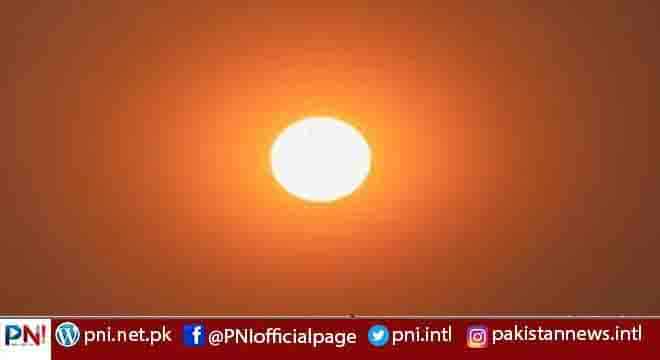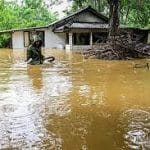ISLAMABAD, May 22 (APP): The abrupt temperature increase and heatwave impacts spiking-up may increase the potential threats and frequency of glacial lake outburst flood (GLOF) like incidents in the northern areas of the country during the summer.
The Shisper Glacier in Hassabad Village of Hunza District created damage to property and infrastructure falling on its route of surge as glacial lake outburst prior to its average duration due to heatwave.
Director Pakistan Meteorological Department,(PMD) Dr. Khalid Malik told APP that the PMD or Met Office had identified 24 valleys bearing potential risk of GLOF activity in GB and northern areas of KP, which was mapped under the GLOF-II project assisted by the United Nations Development Programme (UNDP).
Dr. Malik said, Shisper Glacier-like condition was not possible abruptly as the glacier started surging almost three years back and achieved the present stage after a due course of time. He confirmed that the temperature rise or heatwave causes risk of GLOF that occurred in a particular time-frame.
Moreover, the Met Office Director underlined that there were over 6,000 glaciers in the northern areas of the country where all of them were not accessible due to harsh terrain.
“We have monitored over 100 glaciers under UNDP’s GLOF-II project supervised by the Ministry of Climate Change. Under the project equipment procurement is underway as installation will start in June”, he apprised. He noted that the Met Office was mandated to ensure equipment installation and develop a remote sensing early warning system to issue in time informed advisories to prevent damages to local communities due to GLOF.
“After the equipment installation, we will be able to gauge glacial melting through technical gadgets and record a realtime data of the glaciers”, he said. He underscored that there could not be any possibility of abrupt GLOF incident rather melting of glaciers to expedite in case of temperature rise.
“In case of heatwave and abrupt temperature rise frequency of GLOF like incidents may increase at a drastic level”, he warned. Remote Sensing Specialist (interpreters and analysts of aerial photographs and satellite images) at the International Centre for Integrated Mountain Development (ICIMOD), Dr.Sher Mohammad also highlighted that the recent wave of above normal temperature rise may lead to more GLOF incidents in the Northern Areas of the country particularly Gilgit Baltistan.
He said there were over 3,000 glacial lakes formed in the Northern Areas of the country, whereas 30 of them were potentially dangerous glacial lakes at the brink of outburst flooding. He commented that the Shisper Glacier normally used to outburst late but this time it was before average time due to spike up in temperature.
He cautioned that heatwave would accelerate glacial melting and cause formation of new lakes in the North, adding, “There is major risk of heavy flooding if temperature continues to spike consistently in peak summer season”. “The smaller lakes at the surface of the glaciers remain unnoticed due to its smaller size and regular dissipation. However, if the glacial lake formation continues then persistent temperature rise to 5 degree Celsius above normal can cause alarming situation in the country”, he said.
Follow the PNI Facebook page for the latest news and updates.







